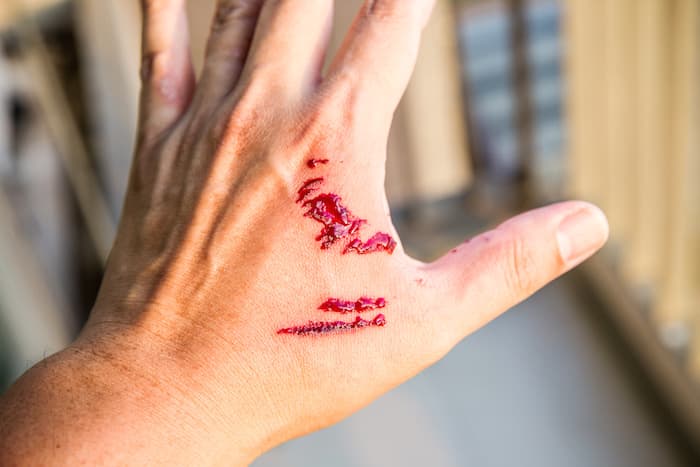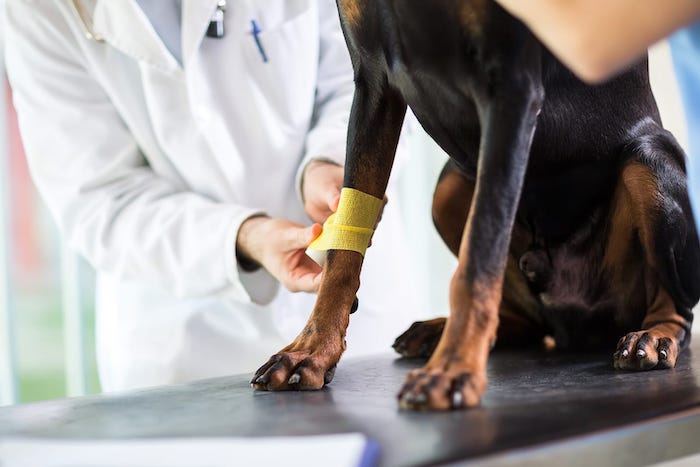Did you know that almost 5 million people in the United States are bitten by dogs every year? Of those, nearly 800,000 require medical attention. Dog bites can cause severe injuries and infections, so it is essential to know how to treat them properly. Having an explicit knowledge of first aid for dog bites can help you prevent further injury and infection.
What Is The First Aid When A Dog Bites You?
Most dog bites occur on the face, neck, or hands. If a dog bites you, the first thing you should do is wash the wound with soap and water for at least five minutes. If the bleeding is severe, apply direct pressure to the wound with a clean cloth. If the bleeding does not stop, seek medical attention immediately.
It is also essential to clean the wound with an antiseptic solution such as hydrogen peroxide or alcohol. Apply a sterile bandage to the wound and keep it clean and dry. Once the area has healed, you should watch for any signs of infection, such as redness, swelling, or pus. If you see any of these signs, seek medical attention immediately.
How Are Dog Bites Treated?
If the bite is more than just a superficial wound, it is essential to seek medical attention. Depending on the severity of the bite, you may need stitches or even surgery. In some cases, dog bites can cause nerve damage. If you experience numbness, tingling, or weakness in the affected area, seek medical attention immediately.
Can You File A Claim For Dog Bites?
For instance, if the dog that bit you was on a leash and the owner did not have proper control of the animal, you may be able to file a claim against them. If the dog was off-leash in an area where it should not have been, you might also have a case. In some instances, homeowners insurance will cover dog bites.
It is essential to speak with an attorney specializing in dog bite cases to learn more about your legal options. A well-versed Puyallup personal injury attorney can walk you through the process of filing a claim and help you obtain the compensation you deserve.
What Are The Long-Term Effects Of Dog Bites?
While most dog bites will heal without long-term effects, some can lead to severe infections. In rare cases, these infections can be life-threatening. If you experience any of the following symptoms, seek medical attention immediately:
- Fever
- Chills
- Rash
- Swelling
- Redness
- Pus or drainage from the wound
- Increasing pain around the wound site.
How To Prevent Infection From A Dog Bite?
While the first step is always to seek medical attention for a dog bite, there are some things you can do at home to help prevent infection.
- First, wash the wound with soap and water for at least five minutes.
- Keep the injured part elevated
- Clean the wound with an antiseptic solution such as hydrogen peroxide or alcohol.
- Apply a sterile bandage to the wound and keep it clean and dry.
- Monitor dog bite area for signs of infections
Myths And Facts About Dog Bites
Dogs are known as “man’s best friend.” But, every year, dog bites remain a severe public health problem. It’s essential to know the myths and facts about dog bites so that you can prevent them.
Myth: Only certain breeds of dogs bite.
Fact: Any dog can bite, regardless of its breed.
Myth: Dogs only bite when they’re provoked.
Fact: Dogs can bite for many reasons, including fear, territoriality, possessiveness, and pain.
Myth: You can tell if a dog will bite by the way it looks.
Fact: A dog may give warning signs before biting, but not all dogs do.
Myth: Dogs that wag their tails are friendly and won’t bite.
Fact: A wagging tail doesn’t always mean a dog is friendly. Tail wagging can also signify excitement, fear, or aggression.
Trained Dogs For Security
Dogs are more than pets and life companions; they can be your loyal security guard that will protect you and your property against burglars and intruders. A well-trained dog for security purposes is an excellent investment, but it’s essential to consider the following points before deciding.
Size – The dog’s size is an essential factor to consider when choosing a security guard dog. A large dog will be more intimidating to potential intruders and have the strength to back up its bark, whereas a smaller dog may be easily scared off or hurt by an intruder.
Breed – Different breeds of dogs have different temperaments and behaviors, so it’s essential to choose a naturally protective breed with a history of being a good guard dog. For security purposes, some of the most popular breeds include German Shepherds, Rottweilers, and Doberman Pinschers.
Training – It’s essential to choose a dog that has been professionally trained for security work. A trained dog will know how to protect you and your property and be less likely to bite someone who is not a threat.
Final Words
If you’re looking for a loyal and protective security guard, a dog may be the right choice for you. Just make sure to do your research before deciding so that you can find the best possible option for your needs. In case of dog bites, always remember to seek medical attention and follow the necessary steps to prevent infection.
Related Reading




